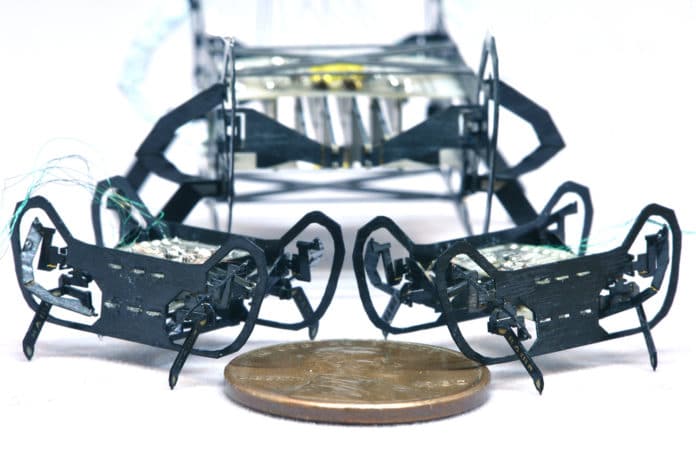Researchers at the Harvard John A. Paulson School of Engineering and Applied Sciences (SEAS) and the Harvard Wyss Institute for Biologically Inspired Engineering, has developed a new microrobot called HAMR-JR. It is a half-scale version of the cockroach-inspired Harvard Ambulatory Microrobot or HAMR that was introduced back in 2018.
The original HAMR was about 5 cm long, weighing around 3 grams and was able to automatically run at speeds of 4 body-lengths per second using its four legs. With more than 60 joints, including hip and legs joints that mimic those of cockroaches, the HAMR was built using the institute’s pop-up microelectromechanical systems (MEMS) fabrication process. This enables the construction of small-scale devices with complex 3D topologies and functionalities.
Despite its small size at the time, the researchers have now developed a version that is only half its size, at ICRA this week. About the size of a penny, HAMR-JR is significantly smaller: just a tenth of the weight, and comes up to about knee-high on a cockroach.
To recreate a smaller robot with all the same functionalities, scientists simply reduced the 2D sheet design of the robot, as well as the actuators and onboard circuitry. Power is supplied through a wired external source.
It is only 2.25 cm in body length and weighs about 0.3 grams. However, its maximum speed is higher than that of the original; it can run about 14 body lengths per second, making it not only one of the smallest but also one of the fastest microrobots. HAMR-JR can also jump, carry payloads heavier than itself, and turn on a dime.
“Most robots at this scale are pretty simple and only demonstrate basic mobility,” said Kaushik Jayaram, a former postdoctoral fellow at SEAS and Wyss. “We have shown that you don’t have to compromise dexterity or control for size.”
